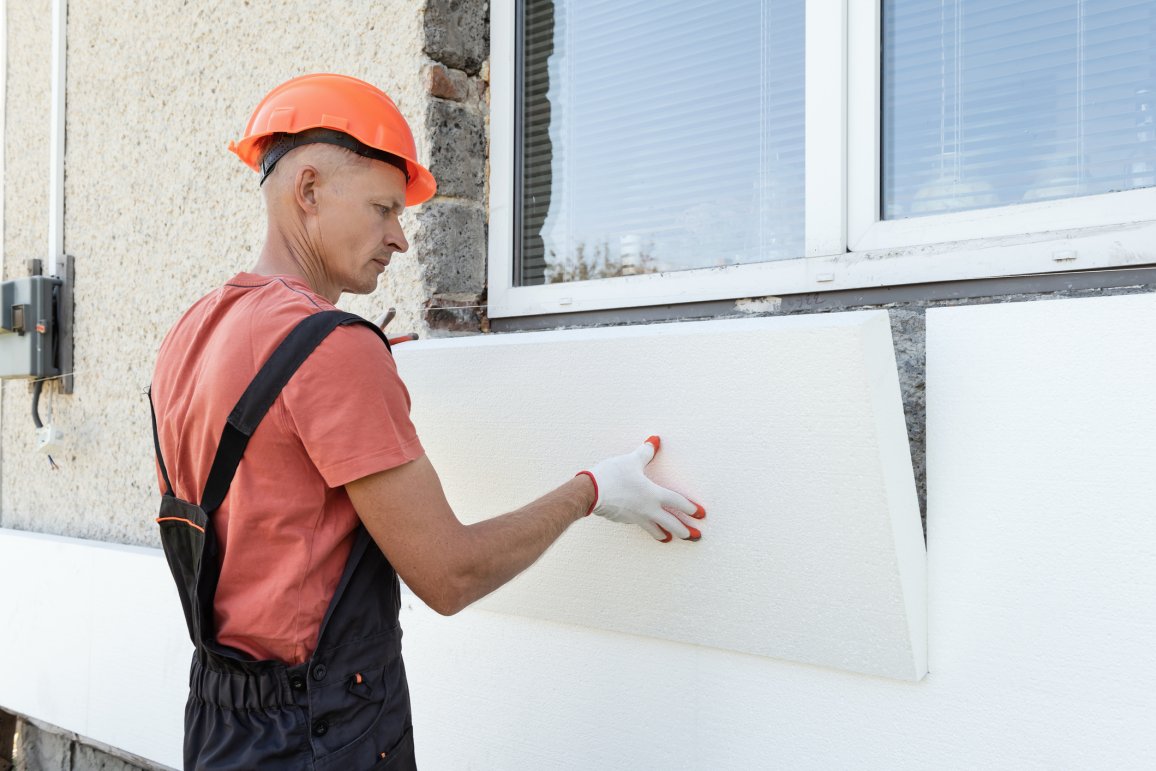Plastics in construction – Invisible but indispensable
What if we built all our buildings without any plastic at all? Part 5 of our series “A World Without Plastics” explores the construction industry and architecture.

Concrete, cement, brick, stone, wood, clay and steel form the structural framework of nearly all buildings. These materials carry the load of a house and shield its interior spaces. They determine the building’s appearance. Depending on the cultural region, age and purpose, one or another material tends to dominate. Since the mid-20th century, however, all buildings have shared one thing in common: they rely on the physical advantages of plastics. Synthetic materials have displaced natural insulators such as wool, flax, hemp, reed, cork and jute.
In a plastic-free house, these natural materials make a comeback. Wooden fibreboards, mineral foams, and glass or stone wool can provide decent insulation for exterior walls and floors. Lime, clay and plasterboard are suitable for interior walls. But the dream ends at the roof: without a vapour barrier, it simply doesn’t work. Water pipes, cable ducts, electricity supply, lighting and waterproof sanitary systems are another matter altogether. For health reasons alone, there is no way back to copper or lead piping.
Sewer Connection Beats Soakaway
A house without plastics can only be realised at the cost of comfort, safety and hygiene. Who would willingly swap central heating and a proper sewer connection for a wood stove and a soakaway pit? In one’s own home, such sacrifices might be acceptable. But in the workplace or public buildings, they are not. Office and industrial buildings, schools, hospitals or stadiums without safe electrical systems, internet access, efficient heating and proper insulation are relics of the past.
Construction itself presents a separate challenge. Machines such as excavators and cranes contain countless plastic components and a great deal of electronics. The same goes for drills and circular saws. Anyone not arriving on foot or by ox cart will use lorries and delivery vans — and electric vehicles contain even more plastic than combustion ones, thanks to their batteries and electronics. Plastics also boost efficiency in construction logistics: materials are delivered well sorted, compact and lightweight — in big bags, barrels, buckets and canisters. When needed, plastic films protect everything from wind and weather.
Better Energy Balance
Whether insulation panels, vapour barriers, films, sealants, cables, sockets or pipes — plastic components seal buildings, transport (waste) water and connect technical systems. They retain heat indoors, prevent mould and protect against the elements. Plastics therefore enhance energy efficiency and extend the lifespan of buildings. Additional advantages include low cost and a strong CO₂ balance. Without plastics in construction, climate goals would slip out of reach. Environmental benefits are accompanied by social ones: reduced construction and operating costs make affordable housing possible on a large scale.
Circular Economy in Construction
Despite all these benefits, the problems associated with plastics in construction must not be ignored. Circular economy principles and recycling need to be advanced globally. The separate collection of waste and used plastics on building sites prevents environmental harm and conserves resources. Renovations and conversions can unearth valuable materials — which can be reused elsewhere or in new forms. Better designs and a smart combination of plastics and ecological materials can limit material demand. Technological progress plays a key role here: improved plastics minimise risks to people and the environment.
Change of perspective: External expertise

Professor Azra Korjenic of the Institute of Material Technology, Building Physics and Building Ecology at TU Wien on plastics in the construction industry. (Picture: Nini Tschavoll)
What role do plastics play in modern construction, and where are they – particularly with regard to climate targets – indispensable today?
Plastics fulfil many important functions in construction, especially when it comes to energy efficiency, durability and the conservation of resources. Insulation materials, window profiles, sealing systems and piping, for example, all help to minimise energy losses and moisture damage, ensuring that buildings remain functional and economically viable in the long term.
When we talk about climate targets, we must also consider production and end-of-life – from the extraction of raw materials to their reintegration into the cycle. During the use phase, many plastic-based solutions help to reduce emissions. However, in a holistic view, the key question is how we will handle plastics in the future within a true circular economy.
Building materials and processes are evolving. Synthetic materials play an important role in many areas – from insulation and sealing to safety and hygiene. Where is the sector heading?
We are at a turning point. The future does not necessarily lie in replacing plastics completely, but in using them more intelligently and resource-efficiently. This means: more recycling, more single-material solutions, better digital tracking of material flows, and the development of bio-based and more durable alternatives – which we still lack for certain applications.
At the same time, traditional materials such as wood, clay and natural fibres are being rethought and integrated into modern hybrid constructions. The future will be a smart combination, where every material has its purpose and place. The goal is to minimise non-ecological materials and only use them where no suitable alternative exists.
The circular economy is also the ultimate goal in construction. Where do the main challenges still lie, and how can it be run cost-effectively?
The biggest challenge remains practical implementation – on site, during deconstruction, and in material separation. Technically, much is already possible today. But a lack of standards, collection systems and financial incentives often prevents a truly consistent resource loop.
Take one example: plastic windows or piping can be recycled efficiently if they are collected separately. But that requires foresight at the design and construction stages. Circular construction means building modularly, ensuring components can be dismantled, and maintaining clear documentation.
I see great potential here – not only environmentally, but also economically in the long run. From a researcher’s perspective, one thing is clear: plastics will not disappear entirely from construction. We must simply learn to use them much more consciously, sparingly and intelligently.
Do you like our texts? Perhaps even so much that you want to use them in your own media? Then please get in touch with us beforehand!
